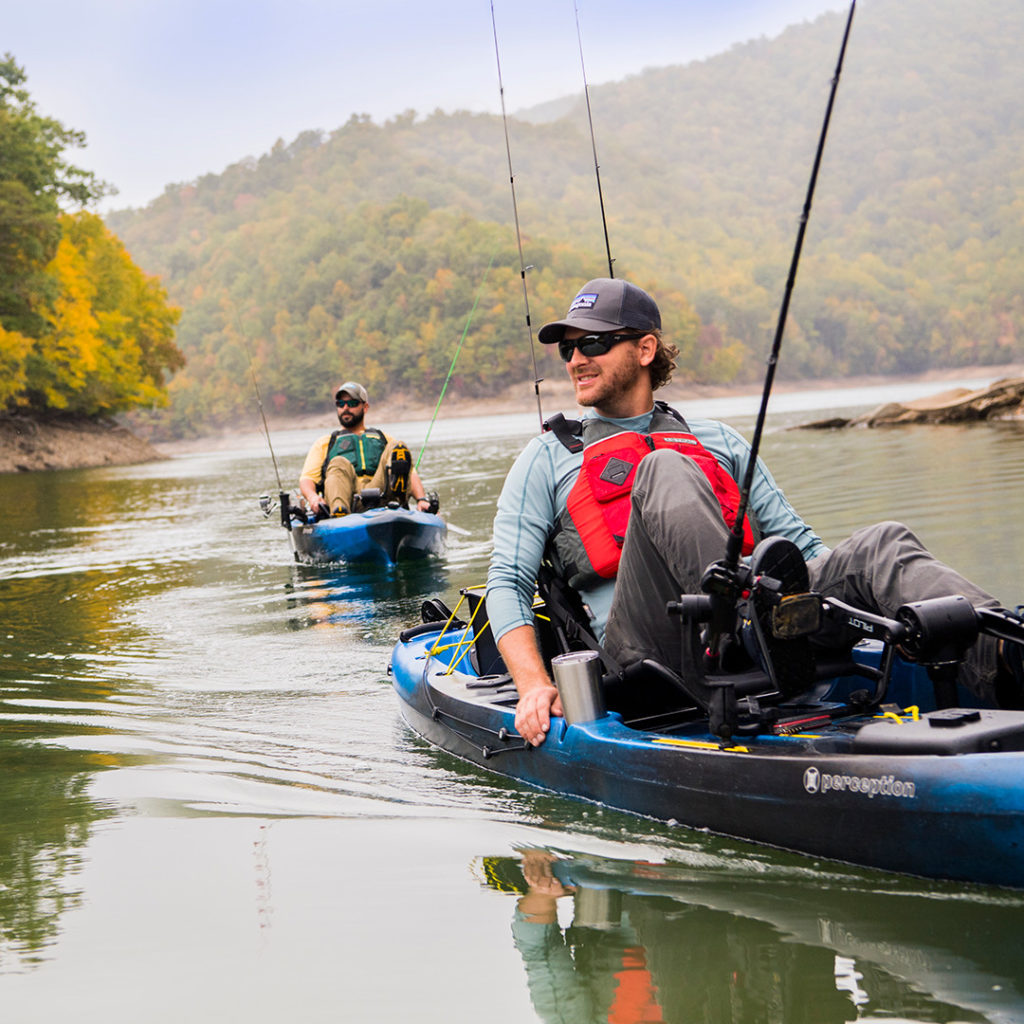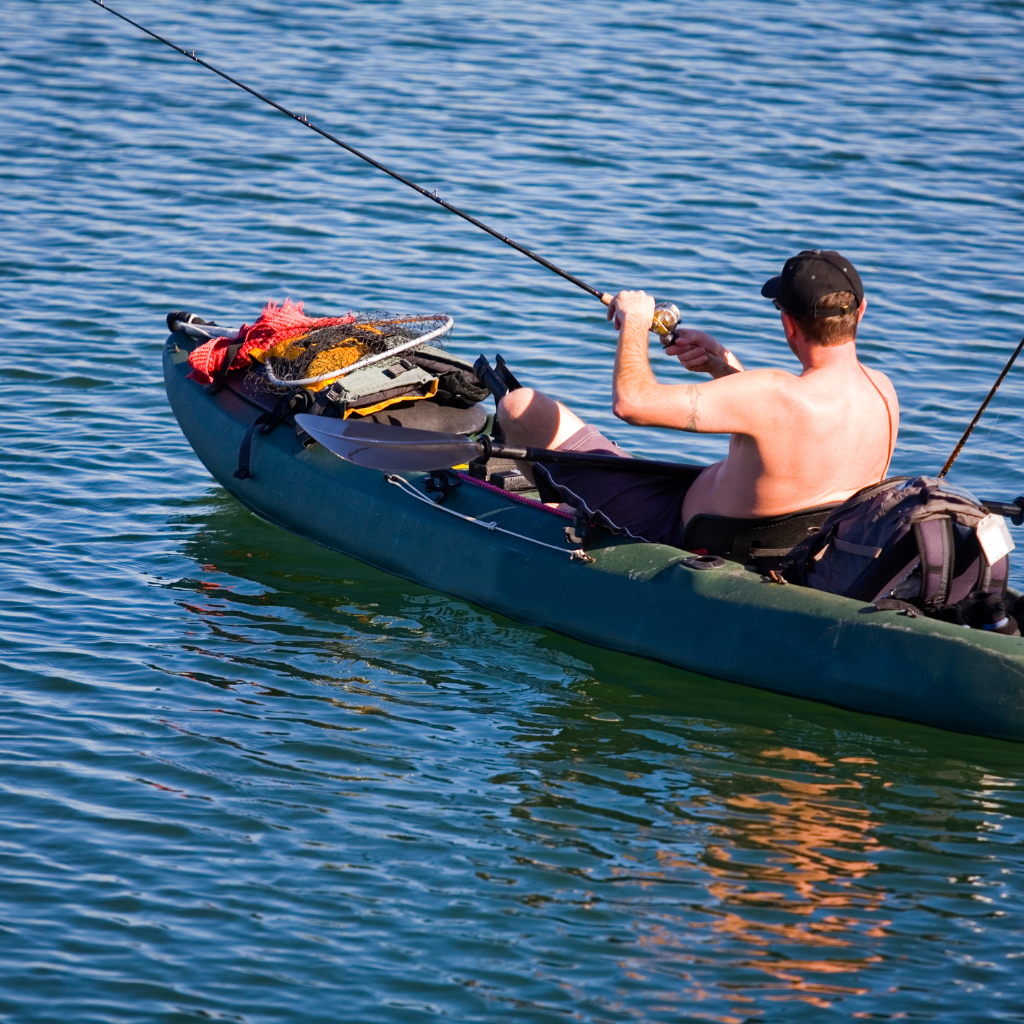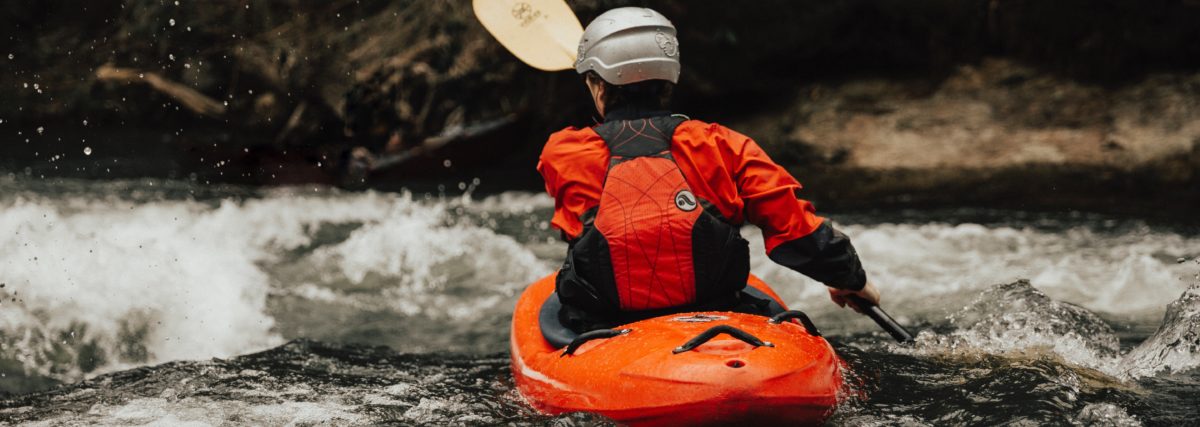If you’re new to the world of kayak fishing, you may be wondering if fishing kayaks are stable enough to be safe out on the water.
Perhaps you love fishing and are wondering if fishing from a kayak is safe. Having owned a couple fishing kayaks over the years, I can share a lot about these kayaks and give you a good perspective on them.
So, let’s get things started!
Are Fishing Kayaks Safe and Stable?
Yes, fishing kayaks are generally stable enough to keep you safe while you fish.
However, there are several factors that determine just how stable a fishing kayak will be.
Factor #1: Width of Kayak

For example, the most important factor is the width of the kayak. The wider the kayak, the more stable it will be. Fishing kayaks are typically wider than other types of kayaks which is one of the reasons they are so popular among anglers.
Factor #2: Hull Design
Another factor that contributes to the stability of a fishing kayak is the design of the hull. Some kayaks have a flat bottom, while others have a V-shaped bottom that provides more stability.
The ones that I love and prefer have a pontoon-style hull which provides even more stability and makes them ideal for standing up and casting.
Factor #3: Size and Weight Capacity

I know from experience that the size and weight capacity of a fishing kayak also play a role in its stability.
If you’re a larger person or plan to carry a lot of gear with you while fishing, you’ll want to choose a kayak with a high weight capacity and larger size. This will ensure that the kayak remains stable even with extra weight on board.
Factor #4: Usage
Finally, the way you use the kayak can also impact its stability.
If you’re a beginner, I suggest you take your time and start out slow and steady. Don’t try to move around too quickly, and avoid sudden movements that could cause the kayak to tip over.
As you become more experienced, you can start to experiment with more advanced techniques and movements, but always prioritize safety first.
Do Fishing Kayaks Tip Easily?

The common concern about fishing kayaks tipping over is largely based on misconceptions. In fact, fishing kayaks are designed with stability in mind and do not easily tip over if used correctly.
As a rule of thumb, the wider the kayak, the harder it is to tip over. As explained earlier, this is because a wider kayak distributes the weight over a larger area, resulting in increased buoyancy and stability.
However, it’s important to note that no kayak is completely immune to tipping. Sudden, sharp movements, or standing up without proper balance may compromise the stability of the kayak.
Also, take into consideration water conditions: water conditions can significantly affect the kayak’s stability. Rough waters, waves, or strong currents can increase the risk of tipping. This is why I strongly suggest that you gain experience in calmer waters before tackling more challenging environments.
Are Fishing Kayaks More Stable than Canoes?
When it comes to stability, fishing kayaks and canoes both have their advantages.
Fishing kayaks are usually designed with wider hulls for better balance on the water, making them ideal for those who enjoy a serene, stable fishing experience. They also tend to sit lower in the water which can reduce the center of gravity and increase stability.
Now on the other hand, canoes can offer a larger area for movement and are more accommodating of additional gear or a second person. This can make them feel more stable, especially when paddling in calm waters.
But canoes do sit higher in the water and may feel less stable in rougher conditions.
They’re both very stable options but I prefer fishing kayaks over canoes because they are easier to paddle and I like that they are lower in the water.
Are Fishing Kayaks Hard to Flip?

In my humble experience, fishing kayaks are generally designed to resist flipping but the ease or difficulty of flipping one will depend on various aspects like its design, the weight it’s carrying, the water conditions, and the behavior of the user, as I discussed above.
If you’re worried about your fishing kayak flipping, then look for a wide hull or a pontoon-style bottom. It’s much harder to flip kayaks designed with those aspects.
Again, for beginners, I recommend to start in calm waters and gradually build up to more challenging situations as confidence and skills improve. If you’re afraid of your kayak tipping, where a life jacket and buddy up with someone experienced.
Are Fishing Kayaks Harder to Paddle?
No, fishing kayaks are not inherently harder to paddle than other types of kayaks.
However, because of their wider design, which lends to stability, also results in a larger surface area in contact with the water, potentially increasing the resistance when paddling.
The difficulty in paddling can also be influenced by the weight of the gear onboard, the water current, and wind direction.
For this reason, certain fishing kayaks are outfitted with pedal systems, allowing anglers to propel themselves using their legs, freeing up their hands for fishing. This can make movement easier compared to traditional paddling.
If paddling is a concern, opt for a paddling kayak.
Last Words
I can definitely say that fishing kayaks are stable and safe enough to go out on the water. However, it’s equally important to choose a kayak that is the right size and weight capacity for your needs and to take your safety seriously.
